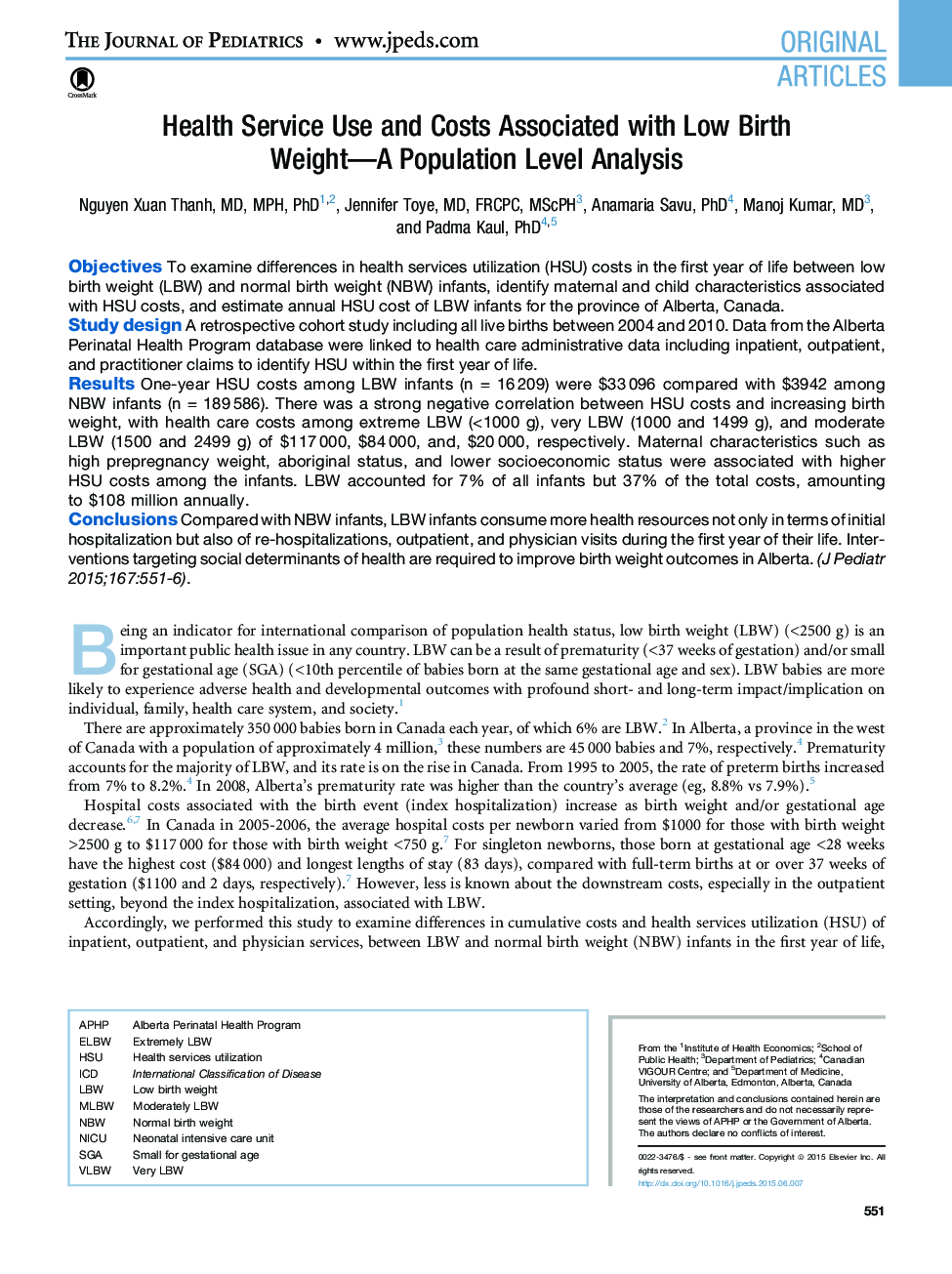| Article ID | Journal | Published Year | Pages | File Type |
|---|---|---|---|---|
| 6220918 | The Journal of Pediatrics | 2015 | 9 Pages |
ObjectivesTo examine differences in health services utilization (HSU) costs in the first year of life between low birth weight (LBW) and normal birth weight (NBW) infants, identify maternal and child characteristics associated with HSU costs, and estimate annual HSU cost of LBW infants for the province of Alberta, Canada.Study designA retrospective cohort study including all live births between 2004 and 2010. Data from the Alberta Perinatal Health Program database were linked to health care administrative data including inpatient, outpatient, and practitioner claims to identify HSU within the first year of life.ResultsOne-year HSU costs among LBW infants (n = 16â209) were $33â096 compared with $3942 among NBW infants (n = 189â586). There was a strong negative correlation between HSU costs and increasing birth weight, with health care costs among extreme LBW (<1000 g), very LBW (1000 and 1499 g), and moderate LBW (1500 and 2499 g) of $117â000, $84â000, and, $20â000, respectively. Maternal characteristics such as high prepregnancy weight, aboriginal status, and lower socioeconomic status were associated with higher HSU costs among the infants. LBW accounted for 7% of all infants but 37% of the total costs, amounting to $108 million annually.ConclusionsCompared with NBW infants, LBW infants consume more health resources not only in terms of initial hospitalization but also of re-hospitalizations, outpatient, and physician visits during the first year of their life. Interventions targeting social determinants of health are required to improve birth weight outcomes in Alberta.
